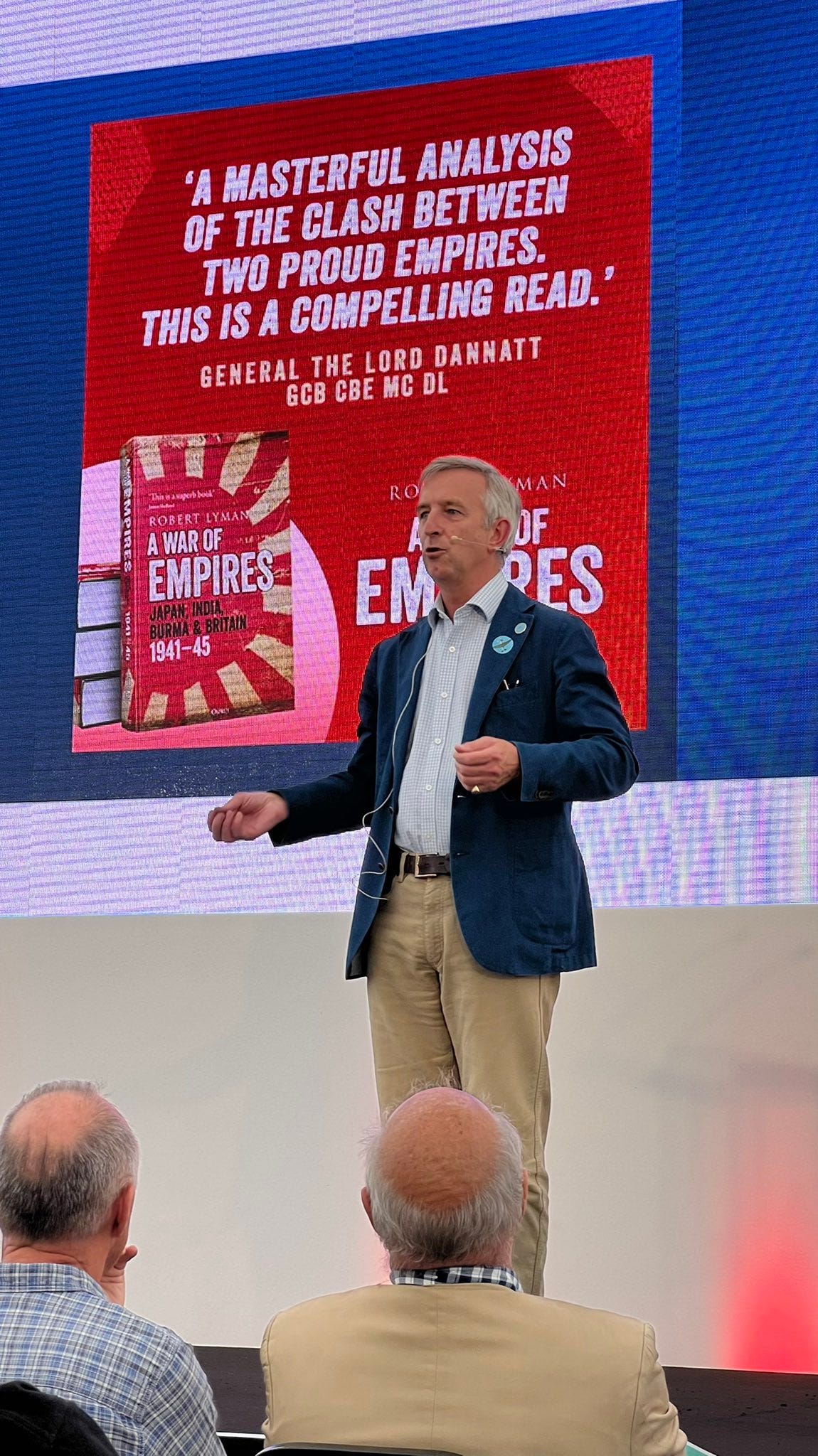I had a marvellous day at the Chalke Valley History Festival yesterday. The sun was shining (mostly), the audience was large and appreciative (and not all sleepy following lunch) and I was able to meet up with old friends and make some new ones. If you haven’t been before, make sure you put this week-long festival of history (and books about it) in this most beautiful part of Wiltshire in your diary for next year. We’ll certainly be back.
The premise of my talk at the festival is that to understand the complexity of the sea shore, you need to view it when the tide is out. So much of history is undertaken when the tide is in. Even when the tide is halfway out we might see somethings, but we don’t have the whole view of what’s underneath. In the UK too much of our appreciation of the war in the Far East (the ‘Burma Campaign’) concentrates on a handful of visible rocks in this ocean, not all of which are helpful. For instance, after a show of hands, we found that when thinking about the campaign the first things that came to the public mind were Wingate, the Chindits, Kohima, the jungle and so on. The tide is pretty much still in.
When I was researching A War of Empires, I found lots and lots of things that history had forgotten, misrepresented or ignored, despite having been immersed in the subject for over thirty years. My talk revolved around a number of these. Some of them, in a not exclusive list included:
The grotesque incompetence of the defensive arrangements for Malaya, Singapore and Burma prior to 1941
The extraordinary weakness at the heart of Japanese ambitions in the region. The invasion in December 1941 was an act of dramatic self-harm that led ultimately to the destruction of Japan
The centrality of China to both Japanese and Allied strategy in the Far East
The trauma inflicted on the Indian diaspora in Burma, many scores of thousands of whom were killed during the fighting in 1942
Likewise, the trauma inflicted on the people of Burma, with direct implications for the continued uncivility in Myanmar today
The role and impact of the various hill tribes in the war against the Japanese and their importance in the ultimate defeat of the Japanese
The character of the Japanese soldier, the power of bushido, and the general incompetence of most Japanese commanders
The role of hubris in Japanese military planning
The dramatic impact on military planning of both the tyranny of distance, terrain and climate
The extraordinary effort the US undertook to create and sustain the Hump airlift. This was, at the time, one of the greatest logistical efforts in the history of humankind
The dramatic transformation of the Indian Army, from a 190,000 strong gendarmerie in 1939 to a war-winning force in 1944 and 1945
The war-winning role of SOE-led Karen guerrillas in 1945
Our forgetfulness in the UK of the role of the West and East African divisions in Burma
There are many more. I had to stop after running out of time at sixty-minutes, and forgot to allow time for questions.
But all is not lost, for you can buy my book here! If you’d like me to send you a signed book plate just let me know.
Enjoy uncovering more of that sea shore…






Rob you were magnificent at CVHF. I've been going since 2013 and your talk ranks very high definitely a top 3 contender and I go to 20 plus talks every year. I was very happy that you ran out of time for questions, James H did as well. I've just started Empires and I'm hoping to finish it by WHW Fest 22.
See you there
Rob, please bring a copy when we meet for lunch on the 18th July. I'll settle up then. Looking forward to it. Piers